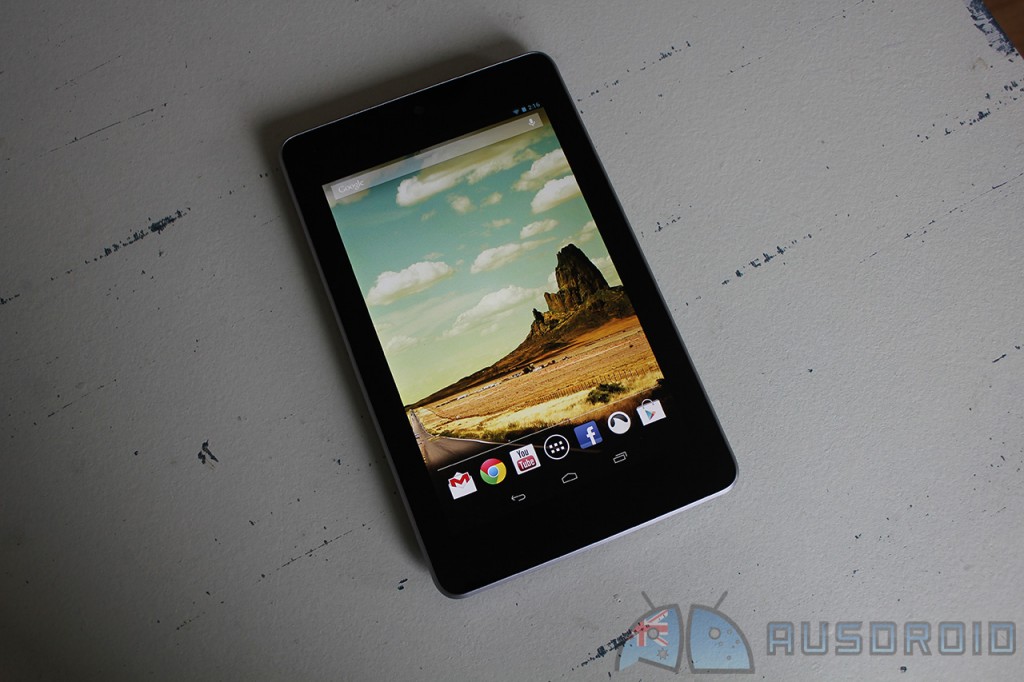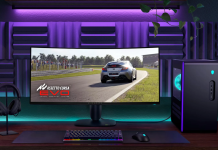
Google rolls the dice with their first tablet.
For some, the wait for a Nexus branded tablet has been painfully lengthy. So many lovers of Android have been crying out for a slate with Google’s specific hand of blessing on it. But it’s not only the fans who have longed for a different formula from Android.
General consumers everywhere who’d heard of Amazon’s Kindle Fire but couldn’t get one (it’s available in the US only) had their appetites whetted for a low cost, high quality alternative to the more expensive offerings in the market. Especially since many of those more expensive options have had app compatibility and performance issues.
Enter, the Nexus 7.
But is it the Savior the loyal Android fans have hoped for? More importantly, could it be the mainstream tablet device to turn the tide for Google before the onslaught of Windows 8 slates or perhaps even a new, smaller offering from Apple?
Even more importantly, what does the Nexus 7 offer you; the customer who’s shopping for something to meet their needs? Let’s see if we can help answer that question for you.
- Buttery smooth navigation throughout the OS.
- Powerful gaming & browsing performance.
- Tablet optimised Google applications.
- Lovely design and ergonomics.
- Ample battery life.
- Limited internal storage
- No MicroSD expansion slot
- Some older apps don’t scale perfectly.
- Display calibration
- No 3G or 4G model (yet)
‘Superfast’ is the word that comes to mind here. The only slowdowns you’ll be experiencing will be due to a poor wifi connection – that’s no fault of the Nexus 7 though. Apps load instantly (unless it’s a massive game) and multitasking is faster on nothing else I’ve used, although the Galaxy Nexus would come very close.
Navigating home screens is a slick operation even with multiple widgets running on multiple pages. The Chrome browser loads websites at closer to the speed of a desktop browser than anything else I’ve seen on a tablet or phone, including the Galaxy S III. Getting this tablet to gasp for breath is almost impossible.
Design..
‘Simple’ best describes the hardware design for me. Google has steered away from trying to produce an object of vanity and that’s fine by me. The design blends form and function in a sensible way. The front is dominated by a big display with nothing else in the way, as it should be in my opinion. The last thing I want on the front is a button I may bump, although I admit I have bumped the home button once or twice while gaming in landscape.
I think the rear of the Nexus 7 should be the model for many tablets going forward. The dimpled leathery feel is lovely and grippy enough that it won’t slip from your hands. It’s not so grippy that rotating it is difficult though. On a personal note I hate the feel of cold metal in my hand so this is ideal for me. Also, metal would impede the data transfer made possible through the nfc coil on the rear. I know many of you like metal but I have avoided it since my Nexus One gave me sore hands.
Battery..
‘Sufficient’. Google claim up to 8 hours of constant use but I believe they are underestimating a little so that our expectations are realistic. On a daily basis I use Plume (Twitter), Chrome, Tubemate (YouTube), Dice Player, MOG, Facebook and Google+. I have 3 email accounts, Twitter, Facebook, Google+, Google Currents and a few other random apps all syncing at their standard settings, with 92 apps in my app list all up. 95% of my usage is with the display on, indoors with auto brightness enabled. Watching videos (Dice Player) would be the exception where I crank the brightness up to 70% or more because of the display dullness.
With all this going on, I find that I use about 10% of my available battery per hour. Most of the time I get around 10-12 hours of actual use with 6-8 hours of screen on time. I tend to turn the Nexus 7 off when not using it Monday – Friday. On the weekend I leave it switched on. It uses about 1% of battery charge per hour if the display is off – presumably that is from background syncing and updates. As always, your usage may vary. I guess if you were gaming at the highest settings with 100% brightness you could kill the battery much quicker, but I’m only a casual gamer so I wouldn’t know.
App Compatibility..
‘Satisfactory’. As I mentioned earlier, there are 92 apps showing in my app drawer list. Of them, only one doesn’t fill the screen area properly – Speedtest. I don’t know why this is the case but it seems to be incompatible with anything bigger than a phone. I must say that the Nexus 7 is a considerably better experience using applications from the Play Store than a 10 inch Android tablet. It is very much like using a big Android phone and that’s not a bad thing.
I’m going to let off a bit of steam here, okay? Indulge me for a minute please. I’m a bit over hearing people talk about ‘tablet specific’ apps. Don’t waste my time asking me about how many ‘designed for the tablet’ apps there are for the Nexus 7. It’s a stupid, non specific question. An application works well with a given screen size and resolution or it doesn’t. Rant over, thanks for listening 🙂
What I have noticed however, is that applications are beginning to have what I’d call a 2 pane layout. Sorry, I’m not sure of the specific name. Enlighten me in the comments if you like! Some of them include social apps like Plume, Facebook and Google+. In fact many of Google’s applications do this. Among them are Gmail, YouTube, Drive, People, Currents and a bunch of others. Often you can tap near an arrow in the top left corner (or swipe left to right) to reveal settings and other functionality. Swiping right to left closes this area. Other apps have tabs at the top or bottom to move to other parts of the app.
The point here is that applications that look good on a phone also look good on the Nexus 7. The space is still used well and with the Nexus 7 you get more area to see your content in the same layout. Many will say that this doesn’t come across so well on a 10 inch Android tablet and I would say that often I agree.
Display..
‘Sharp’. With 216 pixels per inch, it’s as high density as you’ll find on any tablet of the same size at the time of writing. Personally, I find that text is considerably cleaner than the 1280×800 10.1 or 8.9 inch tablets and the 1024×600 7 inch tablets that make up the majority of what’s available on Android at present.
Portability..
‘Superior’. Using a larger tablet is sometimes plain awkward. Lying in bed or on the couch or even while you’re mobile a 10in tablet can be tiring and difficult. Holding it in front of you can also be painful after a short time. The Nexus 7 (and other 7 inch tablets) are perfect for this, even if you only have one free hand. Although, you will need two hands if you want to do anything more complicated than reading.
As the Nexus 7 is close to half the weight of larger tablets it is so much easier to handle for longer periods of time. I have all but completely ceased using my 10 inch tablet and will surely sell it. The plan is to replace it with a cheap 11in ultrabook when the prices come down. The Nexus 7 goes in the back pocket of all my jeans and the side pocket of my work pants (cargo pants). In the past I would have to carry my 10 inch tablet around in my hand. Stuff that!
Storage..
‘Skimpy’. This can certainly be a deal-breaker for some folk who love to load their tablet up with a truckload of music, videos, hi-res photos, large games, etc. I tend to do a lot of these things from the cloud but not all of them. For me, the 16GB tablet has been sufficient. The 8GB tablet would have run out of storage by now as I currently have about 5GB of free space available.
If you’re concerned about storage but really want a Nexus 7 there are workarounds but they may require some messing around. Hit me up in the comments if you need more info on that. I’d certainly suggest buying a 16GB model if your funds aren’t limiting you. The Nand Flash storage on the 16GB model is said to be slightly faster than the 8GB model too. Don’t expect a big difference though.
I’d like to see Google offer a 32GB model which would cater to a bigger audience. But as Google want people to use their cloud services I may be hoping in vain.
Display Calibration..
‘Sub-standard’ is not a great descriptive word, but it does convey the feeling of many about the overall dullness of the panel’s output. The colour temperature doesn’t seem to be set properly and colour accuracy also seems off.
The lack of colour would be almost forgivable if there were controls included to adjust these things, but there aren’t. Turning the display brightness up helps to alleviate these issues a little but then battery life is impacted unnecessarily.
Short story – For colour, don’t dare use the Nexus 7 side by side with a Super Amoled tablet like the Galaxy Tab 7.7 or you’ll be disappointed. In terms of brightness, putting it alongside a Galaxy Tab 10.1 makes it look like it’s about to turn off. Just a little exaggeration there 😉
No 3G or 4G..
‘Sparse’ are the data connectivity options on the Nexus 7. All you get is WiFi. Google are hoping people will be happy to tether to their phone or carry a mobile WiFi device when they’re away from a consistent connection like they would find at home or work.
This also helps to keep the price down and keeps the mobile carriers from filling it with bloatware and slowing down updates. Those things aside, some folk will certainly be disappointed by the lack of accommodation for a network sim card.
We’re not 100% sure at this point if Google will release a 3G/4G model of the Nexus 7, but we are hearing some chatter about it. I personally know a few people that will welcome the added ability to connect to mobile data directly.
Specs:
- NVIDIA Tegra 3 (T30L) with 4+1 Coretex A9 CPU Cores. Single Core Max 1.3GHz, Multi Core 1.2GHz
- 12 x GPU cores @ 416MHz Max GPU Clock
- Android 4.1 (Jelly Bean)
- 7-inch 1280×800 (213 PPI) IPS HD Display
- 8/16GB eMMC 4.41 Kingston Internal MLC Nand Storage
- 1GB DDR3L-1333 RAM with 5.3GB/s Bandwidth
- Single Band Wi-Fi a/b/g/n @2.4GHz, Bluetooth, NFC, GPS
- 1.2MP Front Camera with VGA (640×480) video capture @30fps
- 4325mAh Battery
- 340 Grams
Smaller Tablets..
If you listen to the Ausdroid Podcast *plug* chances are you’ve heard my theory about the 10 inch landscape (tablet) version of Android offering the look of a desktop operating system but without the power or the performance. The seven inch portrait (phone) version of Android gives more satisfaction because it does the basics really well, and doesn’t attempt to replicate all the functionality of a desktop on a smaller screen.
After changing the LCD density of my Nexus 7 and running it in tablet (landscape) mode for a week I convinced myself that ‘phone mode’ is the way forward. Performance and usability are so much better in phone (portrait) mode.
Conclusion..
Right now the Nexus 7 is the best Android tablet. Period. Other tablets do some things better. No other Android tablet does what you need it to do as well as the Nexus 7. It does it better, faster and smoother. It does it in a package that is easier to use and it does it at a price that is cheaper than all its genuine competitors.
Google rolled the dice. I reckon they rolled a 5.
Do you have a Nexus 7? What do you think Google rolled? Tell me in the comments.














